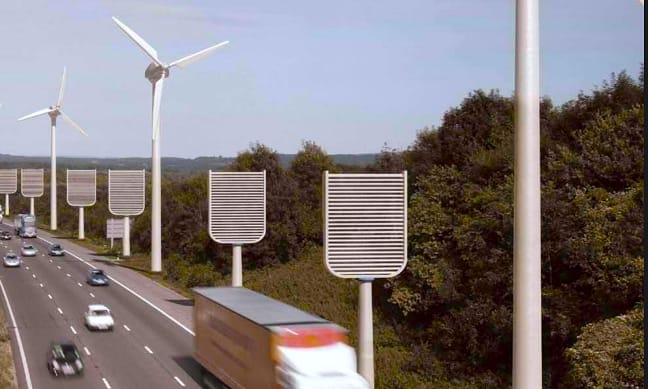In the heart of the arid United Arab Emirates, where natural forests struggle to take root and temperatures routinely scorch the earth, an unlikely solution is rising, steel trees engineered not for shade or beauty, but to cleanse the air. What are these structures, why are they being deployed in places like the UAE, who is behind this innovation, where did the idea come from, when did it begin, and how do they work? These are the questions being answered by a growing body of research and investment into artificial trees, technological innovations designed to pull carbon dioxide from the atmosphere, much like a real tree, but with turbocharged efficiency and independence from water or soil.
The concept first sprouted in the early 2000s, when physicist Dr. Klaus Lackner at Columbia University began experimenting with synthetic systems that could chemically extract CO₂ from ambient air. His early designs led to the development of “mechanical trees,” tower-like structures embedded with resin-coated surfaces capable of capturing and releasing carbon dioxide at rates thousands of times faster than photosynthesis. Today, his research continues at Arizona State University’s Center for Negative Carbon Emissions, and the technology has evolved into practical applications suitable even for extreme environments like the UAE’s deserts, where natural reforestation is constrained by water scarcity and poor soil.

These artificial trees have been lauded for their ability to capture as much as one ton of CO₂ per day, which, according to some estimates, is roughly equivalent to the annual absorption of 1,000 natural trees. However, this oft-quoted figure requires nuance. The actual CO₂ capture capacity of a natural tree depends heavily on species, age, and location, but a mature tree typically absorbs around 21 kg (0.021 metric tons) of CO₂ annually. Based on that average, it would indeed take approximately 48–50 natural trees to absorb one ton per year, meaning an artificial tree removing one ton daily does the work of up to 18,000 trees per year, a staggering metric, though subject to the efficiency and operational context of the synthetic system.
Yet even as these towering machines promise a leap forward in climate mitigation, they are not without critics. Detractors point out the irony: the manufacturing of artificial trees, using metals, rare earth materials, and energy-intensive processes, generates carbon emissions of its own. Construction, deployment, and maintenance can leave a carbon footprint that undermines the very mission of these structures. Lifecycle assessments raise valid concerns about whether the ends justify the means, especially in a world where sustainable development must minimize all forms of waste and pollution.

Proponents counter with the long-term math. While the production phase of an artificial tree does create emissions, the net benefit over time, especially for high-performing models, is substantial. Once operational, these devices can run passively or with renewable energy and continuously scrub CO₂ from the air for years. “No machine is indeed entirely clean,” Dr. Lackner has acknowledged. “But over its lifespan, an artificial tree removes far more CO₂ than it creates during production. The balance is overwhelmingly positive.”
Still, there’s a broad consensus among scientists and environmentalists that artificial trees are not, and should never be, seen as a substitute for forests. Unlike living ecosystems, they don’t provide habitats, support biodiversity, stabilize soil, or generate rainfall. Forests are irreplaceable ecological systems, while artificial trees are tools, powerful ones, yes, but limited in scope. As such, they are best positioned not as a replacement, but as a complement to nature’s machinery, especially in places where planting real trees is simply not an option.
In the UAE, where green ambitions meet harsh natural limits, artificial trees are being embraced as part of a larger climate resilience strategy. From carbon capture in the desert to clean hydrogen production via solar-powered artificial photosynthesis, the vision is clear: to make even the driest lands part of the solution to a warming world. Whether they are dotting city parks, lining highways, or standing sentinel in solar farms, these synthetic sentinels may soon become emblematic of a new era in environmental engineering, one where technology doesn’t aim to replace nature, but to stand beside it in a common cause.





Thanks for sharing. I read many of your blog posts, cool, your blog is very good.